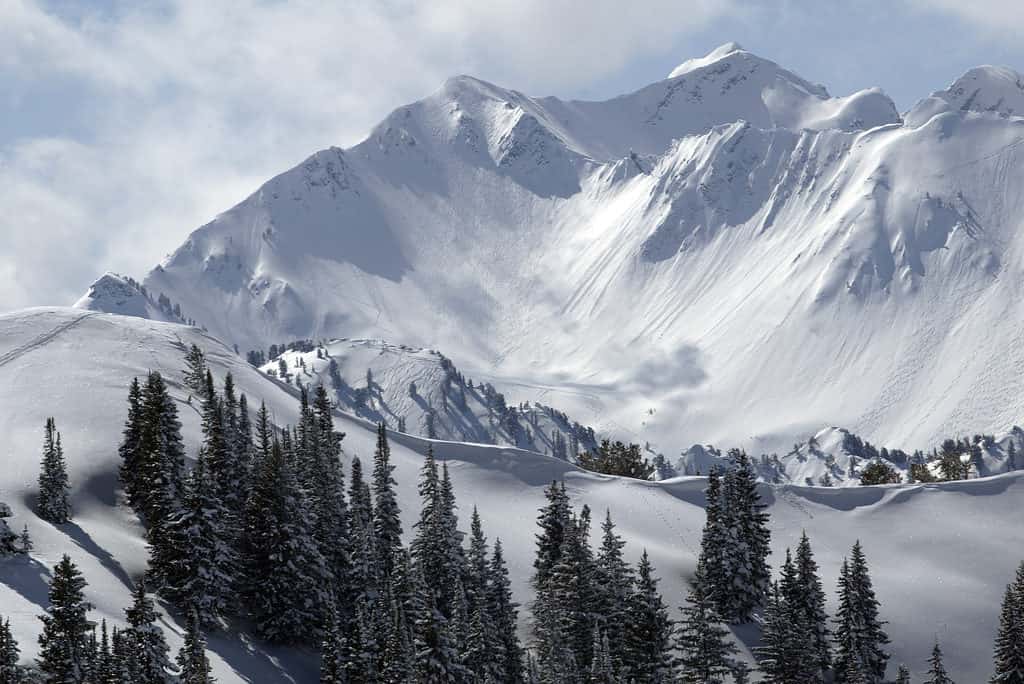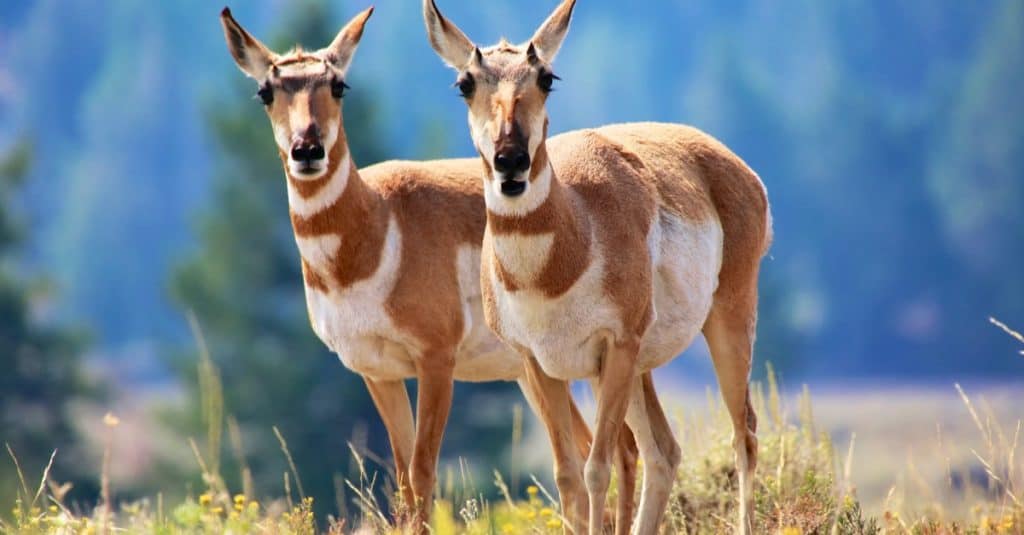In the United States, the month of January can either be characterized by pleasant warmth or freezing temperatures depending on the state in question and its weather history. When it comes to the State of Utah, the climate of the 13th largest US state is popular among people who ski and enjoy spending time outdoors. It is not unusual for professional tourists, skiers, and snowboarders to travel down to Utah during the winter season to enjoy recreational activities. That’s because of how cold it gets in the state. If you have ever been curious about Utah’s weather and the coldest January on record in Utah, this article explores the subject and a few other interesting facts about weather extremes in the state.
Coldest January Temperature Ever Recorded in Utah

The coldest January recorded in Utah was in 1913.
©yoshimedia/Shutterstock.com
January is regarded as Utah’s coldest month. It is also the snowiest month, with high-level snow accumulation in most parts of the state. The coldest January temperature in Utah was recorded on January 5, 1913. This reading was taken at a weather station in a place known as Uinta Mountains (East Portal). The temperature was reportedly an extreme low of -50 degrees Fahrenheit!
Interestingly, this is not the lowest temperature reading ever taken in Utah. In February 1985, a record-breaking temperature reading of -69.3 ºF was taken at Peter Sinks in Utah. This is the coldest temperature ever recorded in Utah. Ironically, the hottest temperature reading in Utah was also recorded the same year.
While all of these locations are uninhabited, the lowest temperature recorded in an inhabited location is −49 °F. This was recorded at Woodruff in Rich County on December 12, 1932.
Average January Temperatures in Utah
January is always one of the coldest months of the year in the State of Utah. With temperatures hitting freezing levels, the state experiences a lot of heavy snowfall. The snowy tall peaks and slopes in various locations across the state provide good opportunities for skiers and snowboarders to enjoy the outdoors.
The average January temperature in Utah is 35.6 ºF, with cold breezes reaching high speeds of about five miles per hour. Humidity levels hit a high of about 77% at the beginning of the month, but it drops slightly by the end of the month. Rains are rare during the first few months of the year, but it snows throughout January.
Utah is surrounded by mountain ranges on the north and east that protects it from major blasts of cold air. However, Arctic blasts may occasionally reach the state, causing long periods of cold temperatures in winter. Average January high temperatures may vary from one location to the other. In the northern valleys, the maximum temperature never exceeds 30 °F (−1 °C), but it may rise to about 55 °F (13 °C) in places like St. George. You can expect the temperature to drop below 0 °F (−18 °C) in some places. This depends mainly on location. For instance, the Town of Randolph gets an average of 50 days in the year when the temperature is in the minus.
Weather in Utah for the Rest of the Year
Utah is in one of the coldest regions in the contiguous US. The state has the second coldest recorded temperature in the lower 48 states of America. The highest amount of snowfall recorded in Utah lasted for 24 hours, with a record of 38 inches of snowfall on December 2, 1982.
Utah’s climate is popularly described as dry and semi-arid. But some others classify the climate as sub-humid. Winters are bitterly cold and snowy in Utah, with frequent snowfall precipitated by the Great Lakes. Winter lasts from December to February with average monthly highs of 28 °F to 36 °F and lows of 12 °F to 16°F. January is regarded as the coldest month during this time.
Summers in the region are notably hot and dry, stretching out between June and September. Average daily temperatures usually peak above 81 ºF. July is considered the hottest month of summer, especially within Salt Lake City, with temperatures as high as 97 degrees and as low as 66 degrees. August is the prime time to enjoy the great outdoors in Utah, thanks to its clear weather conditions. Fall is usually in late September.
Wildlife in Utah

You can find pronghorns in Utah.
©matthieu Gallet/Shutterstock.com
Despite the occasional weather extremes, Utah is known to have a lot of wildlife. The Beehive State used to be the home of the black bear and the grizzly bear until the grizzly bears went extinct in the 1920s. Black bears still remain in forested areas of the state. The mountain lion is also common in the forested areas of the state. Although they’re rarely seen, they do exist.
Mountain lions are also present at Zion National Park, which gets at least four million visitors annually. They detest crowds, making it hard for biologists and tourists to catch a glimpse of them. Just like the mountain lion, cougars and bobcats are also in Utah but prefer to stay out of sight.
Deer roam freely around the park, eating seedlings and saplings with little fear of predators. Utah is also famous for being home to the pronghorn antelope, which is considered the fastest mammal in the new world. It can mainly be found in deserts, grasslands, and in what is known as a sagebrush region. They move around in herds.
Utah also has a lot of bighorn sheep and mountain goats. You can find the sheep in Southern Utah. When hiking or walking the trails in Utah, it is not unusual to encounter reptiles such as lizards and snakes. The desert tortoise (Gopherus agassizii) is the only tortoise species native to Utah.
Conclusion
Without any doubt, Utah is a lovely state. Its diverse landscape of deserts, valleys, and mountains creates a rugged yet desirable environment that draws thousands of people each year for a variety of recreational activities. Snow sports have become economically important and culturally fundamental to the region. So, even though it has always been famous for having extreme temperatures, it is not a state you will forget in a hurry.
Up Next:
- Discover Arizona’s Coldest January on Record
- Vermont’s Coldest January on Record
- Discover Pennsylvania’s Coldest January on Record
The photo featured at the top of this post is © iStock.com/DCrane08
Thank you for reading! Have some feedback for us? Contact the AZ Animals editorial team.






